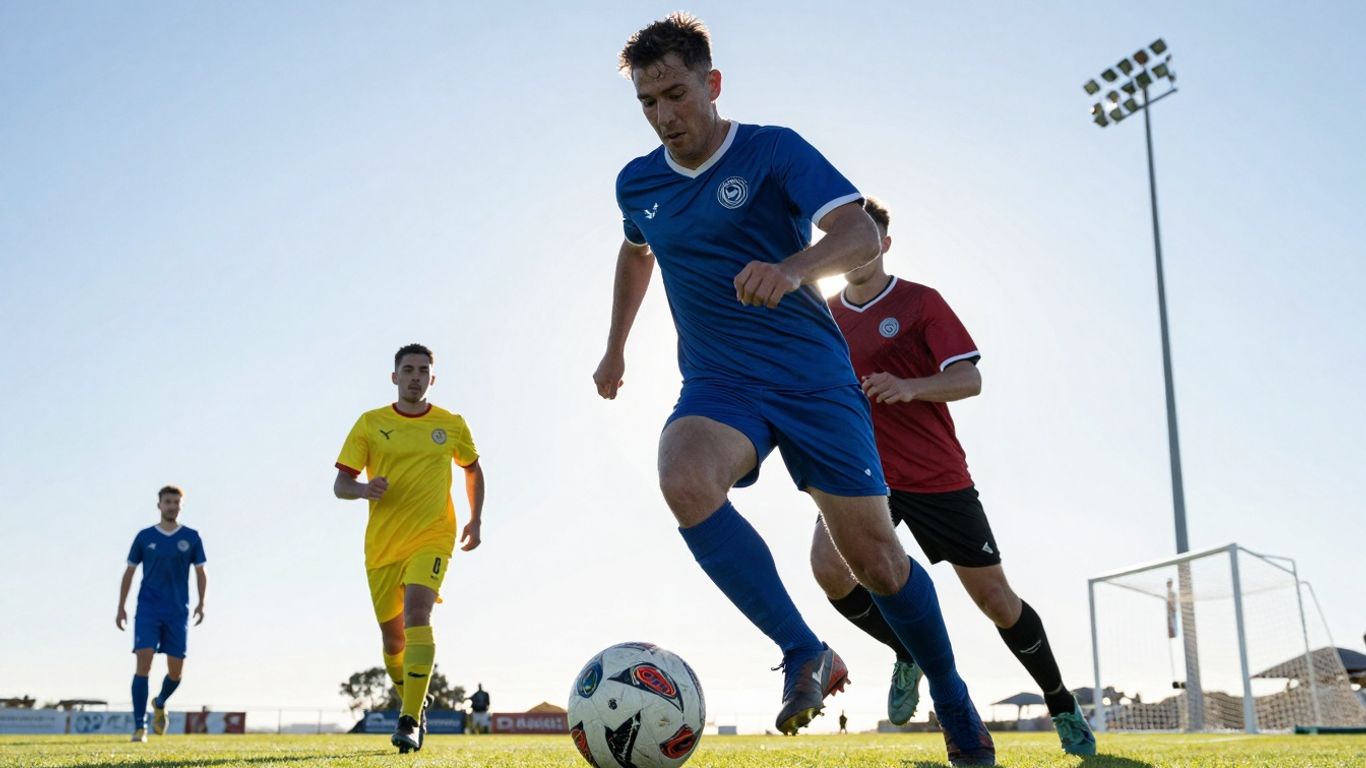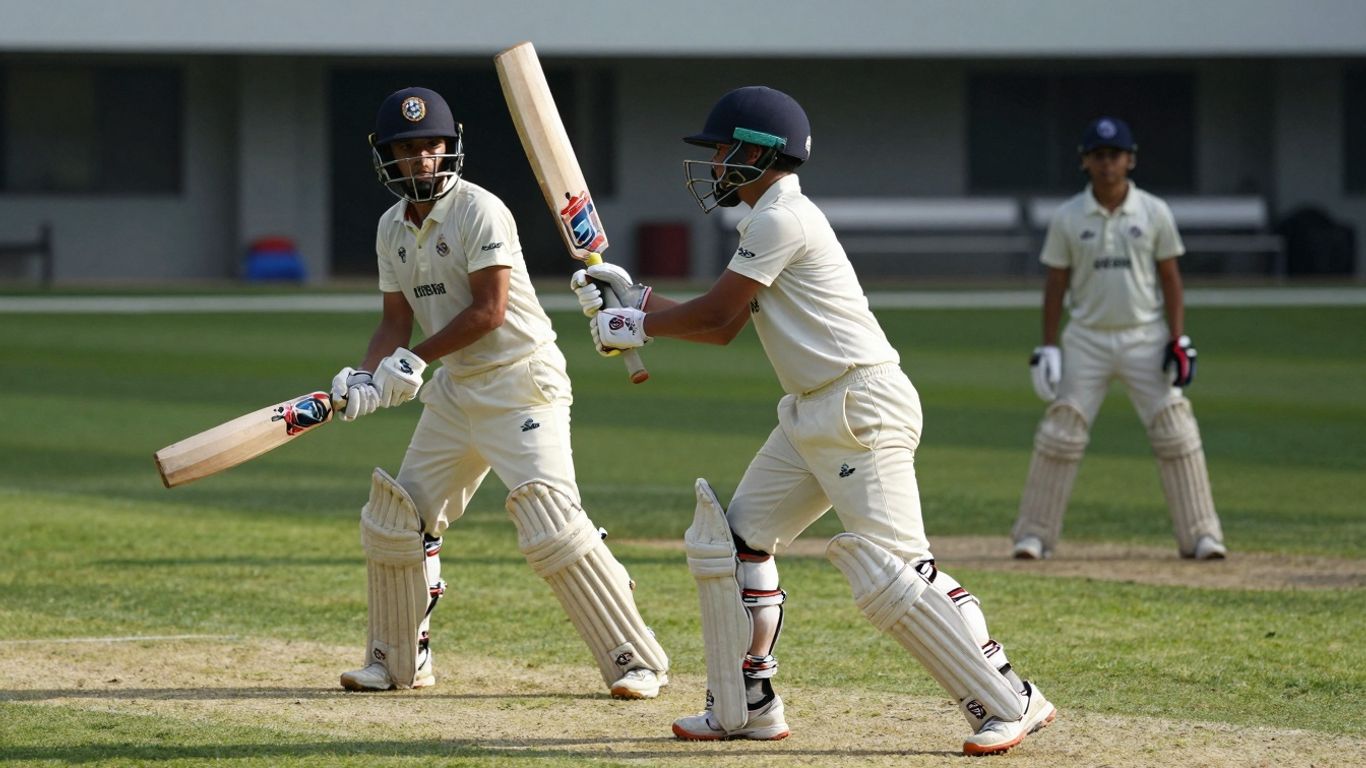Righto, let’s talk about offsides in soccer. It’s one of those rules that can leave you scratching your head, especially if you’re new to the game or just trying to get your head around the finer points. We’ve all seen those moments where a player is suddenly called offside, and it can be a bit confusing. This guide is here to break down the nitty-gritty of offsides in soccer, keeping it simple and straightforward for all you Aussie football fans out there. We’ll cover what it means, when it happens, and how to avoid getting caught out.
Key Takeaways for Aussies
- Understanding offsides in soccer is key to enjoying the game more.
- A player is in an offside position if they are nearer to the opponents’ goal line than both the ball and the second-last opponent.
- An offside offence only happens if a player in an offside position becomes involved in active play.
- Watch out for attacking players trying to get behind the defence; good defenders will try to ‘trap’ them.
- Practice and communication on the field are your best mates for dealing with offsides.
Understanding The Offside Rule
Right then, let’s get stuck into the nitty-gritty of the offside rule. It’s one of those things that can leave you scratching your head, especially if you’re new to the beautiful game. But honestly, once you get the hang of it, it’s not that complicated. Think of it as a way to keep the game fair and stop players from just hanging around the opponent’s goal waiting for a cheap one.
What Constitutes Offside?
At its core, being offside means a player is in an ‘offside position’ at the moment the ball is played or touched by a teammate, and then becomes involved in active play. It’s not an offence in itself to be in an offside position. You’ve only committed an offside offence if you’re in that position and you then get involved.
When Is A Player In An Offside Position?
A player is in an offside position if:
- They are in the opponents’ half of the field.
- They are nearer to the opponents’ goal line than both the ball AND the second-last opponent.
Remember, the goalkeeper counts as one of the opponents. So, if you’re closer to the goal line than the last outfield player and the keeper, you’re likely in an offside position. It’s all about where you are when your teammate kicks the ball.
When Is An Offside Offence Committed?
This is where it gets a bit more detailed. You’re only penalised for being offside if you’re in an offside position and you:
- Interfere with play: This means playing or touching the ball passed or touched by a teammate.
- Interfere with an opponent: This could be preventing an opponent from playing or being able to play the ball by clearly obstructing their line of vision or challenging them for the ball.
- Gain an advantage: This happens if you play the ball or interfere with an opponent when the ball has rebounded or been deflected off the goalpost, crossbar, match official or an opponent, or if it has been deliberately saved by an opponent.
It’s important to remember that the offside law is there to prevent players from simply ‘goal-hanging’. It encourages a more dynamic and flowing game, requiring teamwork and clever movement rather than just waiting for a lucky break.
So, if you’re lurking near the opposition’s goal, make sure you’re not ahead of the second-last defender when your mate passes. It’s a bit like trying to get the best spot at barefoot bowls in Sydney – you need to time your move perfectly!
Common Offside Scenarios
Right, so we’ve got the basics of the offside rule down. Now, let’s look at how it actually plays out on the pitch. It’s not just about being in the wrong spot; it’s about what you do when you’re there. The ref’s whistle only blows if you’re in an offside position and you get involved in the game.
Receiving The Ball
This is probably the most straightforward one. If you’re in an offside position when the ball is played to you by a teammate, and you then play or touch the ball, it’s an offside offence. Simple as that. You can’t just hang out behind the last defender and expect to get a free pass.
Interfering With Play
This is where it gets a bit trickier, and it’s where a lot of confusion happens. Interfering with play means you’re doing something that affects the opponent’s ability to play the ball. This could be:
- Blocking the opponent’s line of vision: If you’re standing in front of the goalie and they can’t see the ball because you’re there, that’s interference.
- Challenging an opponent for the ball: If you go for the ball when an opponent is trying to get it, and you’re in an offside position, that’s a problem.
- Making an obvious play on the ball: Even if you don’t actually touch it, if you clearly try to play it, it counts.
Gaining An Advantage
This is the third way you can be penalised for being offside. It’s about getting an advantage from being in that offside position. Think about it like this:
- Playing a ball that rebounds or is deflected off the goalpost, crossbar, or an opponent: If the ball bounces back to you from the post and you were offside when it was initially kicked, you’re in trouble.
- Playing a ball that has been deliberately saved by an opponent: If the keeper makes a save and the ball comes to you, and you were offside, it’s an offence.
So, it’s not just about being in the wrong place, but actively impacting the game from that spot. Understanding these scenarios is key to avoiding those frustrating offside calls, especially when you’re trying to make a run into the box. Remember, the goal is to play fair and stay onside when it matters. For more on the rules, check out the official laws of the game.
Being in an offside position isn’t an offence on its own. It only becomes an offence if the player in that position becomes actively involved in play.
Avoiding Offside Traps
Getting caught offside is a real buzzkill, isn’t it? It’s like you’ve made a cracking run, you’re in a prime position, and then… whistle. Bummer. But don’t stress, there are ways to keep yourself onside and in the game. It’s all about timing and a bit of spatial awareness.
Timing Your Runs
This is probably the most important bit. You want to start your run after the ball is played, not before. Think of it like this: the ball has to be kicked before you can legally move into an advanced position. If you’re sprinting past the last defender before the pass is even made, you’re asking for trouble. It’s a fine line, but once you get the hang of it, it feels natural. A good way to practice this is with a mate; have them play passes and you focus on timing your burst forward just as they make contact with the ball. It’s a bit like waiting for the green light at a busy intersection – you don’t want to jump the gun.
Staying Level With Defenders
This is where you need to keep an eye on where the opposition’s defence is. If you’re playing against a team that likes to push up high, they might try to catch you out with an offside trap. This means they’ll all move forward together, hoping you’ll be behind them when the ball is played. To counter this, you need to be aware of the defenders closest to your own goal. The golden rule is to try and stay level with, or behind, the second-to-last defender when the ball is played. It sounds simple, but it takes practice. Sometimes, you might even need to hold your run for a second or two, letting the defenders catch up slightly, before making your move. It’s a bit of a chess match, really.
Communication With Teammates
Don’t underestimate the power of a good chat on the field. If you’re unsure about whether you’re onside, or if the defence is pushing up, have a quick word with your teammates. A simple shout of "push up" or "stay" can make a massive difference. Your midfielders and defenders are often in a better position to see the defensive line. They can give you the heads-up you need. Good communication helps everyone stay on the same page, reducing those frustrating offside calls. It’s like having an extra set of eyes out there, and it can really help you avoid those pesky offside traps, especially when playing a formation like the 5-3-2 soccer formation which relies on solid defensive structure and quick transitions.
Being aware of the offside rule isn’t just about avoiding penalties; it’s about smart play. It means understanding the flow of the game and anticipating the movements of both your teammates and the opposition. Get this right, and you’ll find yourself in more scoring opportunities, rather than watching from the sidelines.
Here’s a quick rundown to keep in mind:
- Watch the ball: Always focus on when the ball is kicked.
- Know your defenders: Keep track of the second-to-last defender.
- Listen to your team: Communication is key to staying onside.
- Be patient: Sometimes waiting a split second longer is better than being caught out.
Offsides in Soccer: Key Takeaways for Aussies
So, we’ve gone through the nitty-gritty of the offside rule. Now, let’s wrap it up with what really matters for us Aussie players and fans.
The Importance of Awareness
Being switched on to where everyone is on the park is half the battle. It’s not just about the bloke with the ball; it’s about your teammates, the opposition, and where the last defender is standing. Think of it like this: if you’re a striker, you need to know if you’re level with the second-last defender before the ball is played to you. If you’re a defender, you need to be aware of the attacking players lurking. It’s a constant mental check, and honestly, it makes the game flow so much better when everyone’s on the same page. Getting a good grasp of the rules is a solid step towards a rewarding career in soccer officiating, and it helps everyone on the pitch.
Practice Makes Perfect
Rules are one thing, but putting them into action is another. You can read all you want, but until you’re out there, feeling the pressure, it’s just theory. Try these drills:
- Defensive Line Drill: Have defenders practice stepping up together to catch attackers offside. Focus on timing and communication.
- Attacking Runs Drill: Strikers practice making runs that stay onside, timing their release with the pass.
- Small-Sided Games: Play games with modified rules that encourage offside awareness, like limiting the number of players allowed ahead of the ball.
Respecting The Referee’s Decision
Look, the refs have a tough gig. They’re trying to keep up with a fast-paced game, and sometimes, they’ll get it wrong. It happens. We’ve all been on the receiving end of a call we didn’t agree with. But getting into it with the ref rarely helps. It just disrupts the game and can lead to cards. The best approach is to accept the decision and focus on the next play. If you’re really keen on understanding the rules better, consider looking into referee courses; they offer essential training for aspiring officials.
Ultimately, understanding offside isn’t just about avoiding penalties; it’s about playing smarter, more organised football. It’s a team effort, and when you get it right, it can really stifle the opposition and create scoring opportunities for your own side. Keep practicing, stay aware, and respect the officials.
So, That’s Offside!
Right then, hopefully, that’s cleared up the offside rule a bit for everyone. It can seem a bit confusing at first, especially when you’re watching a game and trying to figure out what the ref’s doing. But honestly, once you get the hang of it, it’s not that bad. Just remember, the attacker has to be in front of the second-last defender when the ball is played. Keep watching those games, and don’t be afraid to ask if you’re unsure. It’s all part of learning the game, eh?
Frequently Asked Questions
So, when is a player actually offside in soccer?
A player is offside if they’re closer to the opponent’s goal line than both the ball and the second-last opponent when the ball is played to them. It’s not just about being in that position, though; they also have to be involved in the play. Think of it like this: if you’re lurking near the opposition’s goal, waiting for a pass, and you’re ahead of the defenders (except the goalie), you might be offside if you then get involved in scoring.
What does ‘interfering with play’ mean when it comes to offside?
Interfering with play basically means you’re getting involved in the action. This could be by touching the ball that was passed to you, or by blocking an opponent’s path or vision. If you’re in an offside spot and you touch the ball, or even just get in the way of a defender trying to play the ball, you’ve committed an offside offence.
Can you explain what an ‘offside trap’ is?
An offside trap is a clever tactic used by defenders. They all move up the field together at the same time, pushing the attacking players further up. If an attacker is ahead of them when the ball is played, they’ll be caught offside. It’s all about timing and making sure your attackers don’t get caught out.
How can attackers avoid getting caught in an offside trap?
To beat an offside trap, attackers need to be smart with their runs. Timing is key! Instead of running too early, wait for the right moment, often when the ball is about to be played. Staying level with the last defender or even dropping back slightly before making a sharp run can also help. Good communication with the player on the ball is super important too, so they know when and where to pass.
What if a player is in an offside position but doesn’t touch the ball?
Even if a player in an offside position doesn’t actually touch the ball, they can still be penalised if they’re seen to be interfering with play. This could mean blocking a defender’s view, making a movement that distracts them, or gaining an advantage by being in that position. So, just being there can be enough if it affects the game.
Does the offside rule apply everywhere on the field?
No, the offside rule doesn’t apply in your own half of the field. You can’t be offside in your own defensive end. It only comes into play when you’re in the opponent’s half. Also, you can’t be offside if you receive the ball directly from a goal kick, a throw-in, or a corner kick. These are special cases where the rule doesn’t apply.




